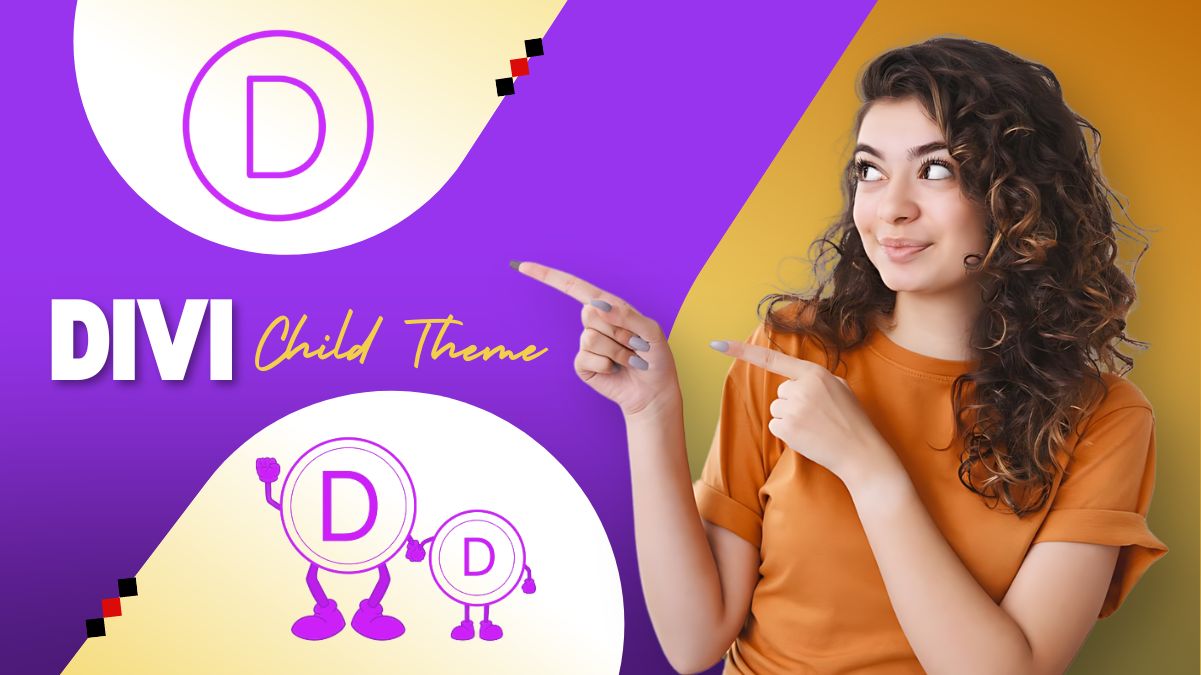After working with a variety of WordPress themes, I can certainly declare that Divi is one of the most adaptable and user-friendly solutions available. However, in order to get the most out of Divi, you must use child themes.
Let me explain why Divi child themes are so powerful and provide some best practices to follow.
What is a Divi Child Theme?
A Divi child theme is a WordPress theme that inherits the functionality and style of its parent Divi theme. It allows you to customize your site without modifying the parent theme files, ensuring that your changes remain even after theme upgrades.

Benefits of Using Divi Child Themes
1. Preserves Customizations
When you update the Divi theme, any modifications you make to the theme files will be lost. A child theme stores your customizations independently, ensuring that they remain intact after updates.
2. Enhanced Flexibility
Divi child themes offer a versatile framework for implementing custom CSS, PHP functions, and other changes. This adaptability enables more customizable designs and features that address individual needs.
3. Easier Troubleshooting
Separating custom code from the parent theme makes troubleshooting much easier. If something goes wrong, you may rapidly detect and solve problems in the child theme while preserving the parent theme’s fundamental functionality.
4. Streamlined Workflow
Using child themes can help developers streamline their workflows. You can save time and work by creating a base child theme with common customizations that can be reused for several projects.
5. Future-Proofing
As Divi evolves with new features and upgrades, a child theme keeps your site compliant and up to date without risking the loss of custom work.
Best Practices for Using Divi Child Themes
1. Start with a Solid Foundation
Begin with a properly coded child theme. Elegant Themes, the Divi developers, offer a starting child theme that can be used as a basis. This ensures compatibility and lowers the likelihood of problems.
2. Keep It Organized
Maintain a clean and organized file structure for your child theme. Separate CSS, JavaScript, and PHP files into their respective directories. This organization makes it simpler to manage and update your customizations.
3. Use Version Control
Use version control, such as Git, to keep track of modifications to your child theme. This approach enables you to roll back to prior versions if something goes wrong and collaborate more effectively with team members.
4. Leverage Custom CSS and Functions
To add custom styles and functions, use the style.css and functions.php files included with the child theme. This approach separates your adjustments from the parent theme and ensures that they are loaded correctly.
5. Test Thoroughly
Before you launch your site, properly test your child theme in a staging environment. Check for compatibility issues, broken links, and other potential difficulties to guarantee a successful launch.
6. Regular Updates
Keep your child’s theme up to date. Although child themes are intended to be stable, regular updates with new features or bug patches can improve your website’s efficiency and security.
My Personal Experience with Divi Child Themes
After purchasing and utilizing Divi on multiple projects, I quickly realized the value of child themes. My earlier attempts at customization without a child theme ended in frustration as updates undid my adjustments. Switching to kid themes was a game changer.
I discovered that developing a child theme allowed me to experiment with bespoke designs and functionality without the risk of losing my work. The ability to integrate custom CSS and PHP routines greatly enhanced my productivity. Troubleshooting also became easier because I could identify issues within the child theme.
One of my favorite advantages of using Divi child themes is the opportunity to make my work future-ready. As Divi introduced new capabilities, I was able to update the parent theme without worrying about compatibility issues. This smooth integration saved me time and kept my websites current.
In fact, I’ve formed the habit of beginning each new Divi project with a child theme. This strategy retains my customizations while still establishing a professional standard for my work. Clients value the steadiness and permanence that this technology offers.
Conclusion
Using Divi child themes is a great practice for increasing your website’s customization, versatility, and future-proofing. Child themes are crucial for Divi users since they preserve customizations, streamline workflow, and ensure compatibility.
In my own experience, embracing kid themes has considerably enhanced both my development process and the overall quality of my projects. Make the move to Divi child themes and you’ll soon notice the benefits for yourself.
FAQ’s
What is a Divi child theme?
A Divi child theme inherits the functionality and styling of its parent Divi theme, allowing for customizations that remain after upgrades.
Why should I use a Divi child theme?
Using a Divi child theme ensures that your customizations are preserved even after theme updates, increases flexibility, simplifies debugging, and helps future-proof your site.
How do I create a Divi child theme?
To build a Divi child theme, create a new folder in your themes directory, add a style.css and functions.php file, and link them to the parent Divi theme.
Can I use Divi child themes for multiple projects?
Yes, you may develop a base child theme with common customizations and utilize it across multiple projects to streamline your workflow and save time.
Do Divi child themes affect website performance?
Using a child theme has no effect on the performance of your website. It merely facilitates customization and maintenance without affecting the parent theme’s core files.
